ICYMI: Highlights from the week that was April 21 – 27, 2019
No one can keep up with everything, so let us do it for you. We’ll gather the top Smithsonian stories from across the country and around the world each week so you’ll never be at a loss for conversation around the water cooler.
This week we learned of the discovery of a “perplexing platypus crab.” As if platypusses (platypi?) aren’t perplexing enough all by themselves.

The Beauty And The Power Of African Blacksmiths
NPR’s “Goats and Soda,” April 21
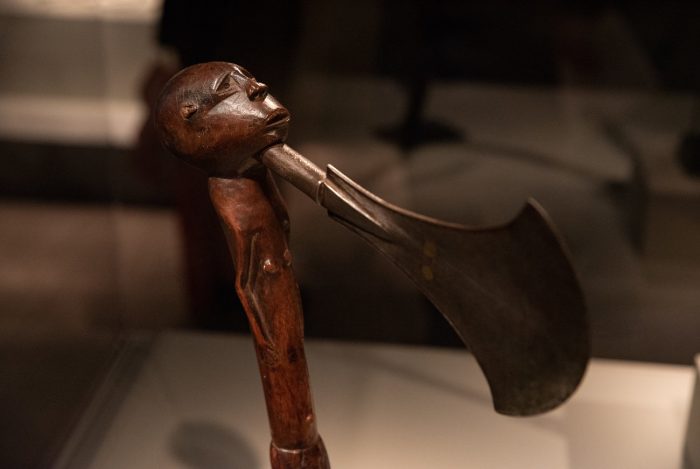
This so-called “power figure” from a Songye artist in what is now the Democratic Republic of the Congo was believed to have supernatural abilities. It’s from the mid-to-late 19th century. (Olivia Sun for NPR)
In the fictional world of Marvel’s Black Panther, the Afro-futurist utopia of Wakanda has a secret, almost magical resource: a metal called vibranium. Its mythic ability to store energy elevated vibranium to a central role in the fictional nation’s culture and the metal became part of Wakandan technology, fashion and ceremony.
Of course vibranium isn’t real. But one metal has held a similarly mythic role for over 2,000 years in many cultures across the African continent: iron.
African blacksmiths have been crafting agricultural tools, musical instruments, weapons and symbols of power and prestige out of the raw material for ages. “Striking Iron: The Art of African Blacksmiths,” a new exhibit at the National Museum of African Art in Washington, D.C. showcases Africa’s rich history of ironworking through 225 tools, weapons and adornments from over 100 ethnic groups across Africa. Read more from NPR.
Jerrie Cobb, Record-Breaking Pilot and Advocate for Female Spaceflight, Has Died
She was much more than a woman whose dreams of spaceflight were thwarted.
Space.com, April 20
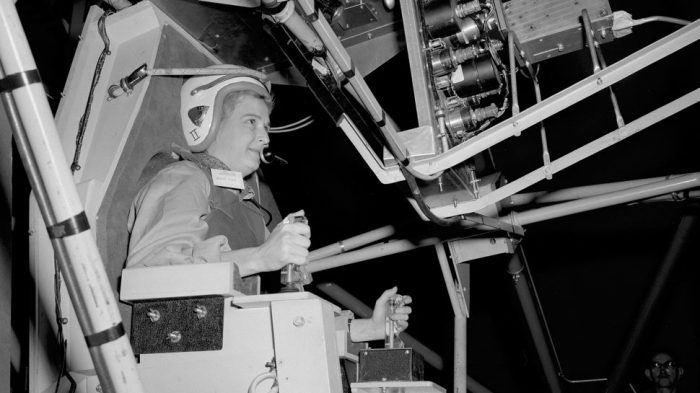
Jerrie Cobb trained on NASA’s Multi-Axis Space Test Inertia Facility (MASTIF) in 1960, shortly after the male Mercury 7 astronauts did so.(Image: © NASA)
errie Cobb, the first woman to pass all the same preflight tests as NASA’s seven Mercury astronauts, has died.
Cobb, whose full first name was Geraldyn, was a record-setting pilot and an outspoken advocate for gender equality in spaceflight who dedicated her later life to Christian missionary work in the Amazon. She was also one of countless American women who have pushed back against sexism and reached for space. She died in March at age 88; her death wasn’t publicly confirmed until yesterday (April 18).
She is sometimes called NASA’s first female astronaut candidate, but she was not; the agency did not accept women as candidates until 1978, in the class that included Sally Ride, who would become the first American woman in space five years later. But Cobb aired her frustration with NASA’s sexism openly, culminating in 1962, when she testified before Congress at hearings that essentially investigated whether the agency was discriminating against women, years before the practice was made illegal. Read more from Space.com.
Smithsonian museum director discusses Native American history and policymaking
The GW Hatchet, April 23
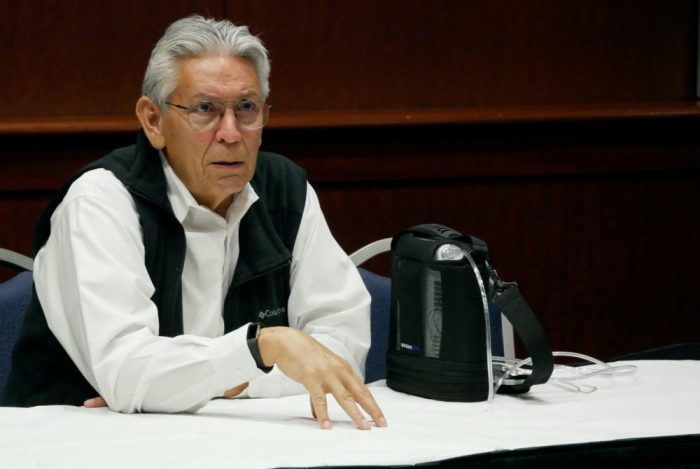
Kevin Gover, the director of the Smithsonian National Museum of the American Indian, speaks at the Marvin Center Thursday about his career and teaching Native American history. (JACK FONESCA | CONTRIBUTING PHOTO EDITOR)
The director of the Smithsonian National Museum of the American Indian discussed his career and problems with the way Native American history is taught at a lecture Thursday.
Kevin Gover, who became the museum’s director in 2007, discussed myths and realities about Native American history at the event, which was hosted by the Office of the Provost University Seminar Program and the AT&T Center for Indigenous Politics and Policy. Gover, a citizen of the Pawnee Tribe of Oklahoma and a former Assistant Secretary of Indian Affairs, also recounted his career as an attorney and a bureaucrat specializing in Native American issues.
In case you missed it, here are some highlights from the event: Read more from the GW Hatchet.
How Rafael Lozano-Hemmer uses your biometric data to create art
“I am very concerned but also curious about the age of metrics. These days everything is quantified.”
Fast Company, April 25
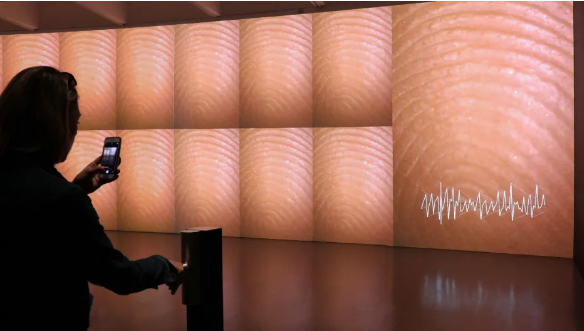
Pulse Index, 2008 in Rafael Lozano-Hemmer: Pulse at the Hirshhorn Museum and Sculpture Garden, Washington, D.C., 2018. [Photo: Cathy Carver]
Known for incorporating technology and design into his artwork, Mexican-Canadian artist Rafael Lozano-Hemmer is exhibiting his immersive public art installations together for the first time under one roof at Washington, D.C.’s Hirshhorn Museum. In the exhibit, called Pulse, which closes at the end of the week, Lozano-Hemmer uses interactive technology to interpret the vital signs of visitors. Biometric signatures–fingerprints, heartbeats–of each visitor are recorded as repetitive sequences and translated into immersive sound experiences, waves in water tanks, and flashing lights.
In the first piece in the exhibit, Pulse Index, participants’ fingerprints and heart rates are recorded via a custom-made sensor and displayed along with the fingerprints of the past 10,000 participants on a grid, pulsating to their heartbeat. In Pulse Tank, participants’ heartbeats are turned into ripples in an illuminated water tank, creating patterns that are then reflected on gallery walls. In the last piece in the exhibit, Pulse Room, rows of light bulbs hang from the ceiling and pulsate to the rhythm of the heartbeats of past visitors. As more visitors pass through, the heartbeats travel down the row until it ends. Read more from Fast Company
Korean hip-hop star Jay Park to be honored by the Smithsonian
New York Post Page Six, April 24

Jay Park (Getty Images)
Korean music sensation Jay Park, who recently announced his retirement, will be honored by the Smithsonian.
Park stunned fans last week when he announced on Twitter that he’s quitting music at age 31.
However, before that, the hip-hop artist will be honored by the Smithsonian Asian Pacific American Center at its inaugural gala dinner — The Party — next month.
“The Party will celebrate the indelible contributions of Asian Pacific Americans to the American experience,” said Smithsonian director Lisa Sasaki. “From music to technology, sports to entertainment, these modern history makers inspire Americans of every ethnicity, religion and socioeconomic background by demolishing barriers and challenging timeworn stereotypes with their talents, perseverance and ingenuity.” Read more from Page Six.
Smithsonian Institute (sic) Helps Recover Memories Damaged in Iowa Floodwater
WHO13-TV, April 25
Residents western Iowa have had many homes flooded out over the past month. In addition to the loss of living space, is many personal items, photos, books and documents are now water-logged and muddy.
FEMA officials announced this week a series of workshops in Sidney, Glenwood, Missouri Valley, and Woodbury County to help those in need to learn how to recover some items.
“We’re here with the saving your family treasures program we’re here to teach survivors techniques that will allow them to salvage their personal items,” said Colleen Carroll, of the Smithsonian Cultural Rescue Initiative. “But if the object has personal value to you, these are small steps you can take with supplies that come from your local Walmart your local hardware store easy to get.” Read more from WHO-TV in Syney, Iowa.
Human remains ‘looted’ from Aleutian Islands may have a story to tell
Anchorage Daily News, April 25

Smithsonian National Museum of Natural History (Smithsonian Institution Photo)
The ancient human remains, removed from burial sites in the name of science nearly a century ago, are shelved within metal cabinets at a Smithsonian Institution museum.
They’re identified unceremoniously: P377760, P377761 and so on.
But residents of a remote Aleutian Island village say they plan to bring the remains home starting as early as this summer, to give them the dignity they’re due.
“These are not just numbers, these are actual people, our ancestors,” said Crystal Dushkin, the mayor of Atka, a village of 70.
The tribe’s president there has a three-year plan to recover the remains, from more than 175 individuals collected from 11 islands. They would be buried on three islands in the western Aleutians between Russia and the Alaska mainland.
“We have a responsibility to see that they are respectfully returned to where they came from,” said Dushkin, who is also cultural affairs director for the Atka tribe. “We are their representatives. There is no one else that can speak for them.” Read more from the Anchorage Daily News.
Palaeontologists Discover A ‘Perplexing Platypus Crab’
Forbes, April 25
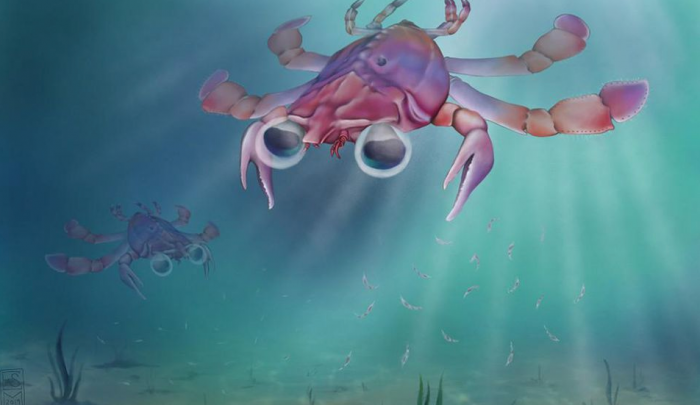
Artistic reconstruction of Callichimaera perplexa: The strangest crab that has ever lived. (Credit: Elissa Martin, Yale Peabody Museum of Natural History) ELISSA MARTIN, YALE PEABODY MUSEUM OF NATURAL HISTORY
Scientists have uncovered the “platypus” of the crab world – a new species so strange they’ve named it the “perplexing beautiful chimera”.
An international team of palaeontologists led by Javier Luque of Yale were working on hundreds of exceptionally well-preserved specimens they discovered in Colombia and the US when they spotted the tiny Callichimaera perplexa.
“Callichimaera perplexa is so unique and strange that it can be considered the platypus of the crab world,” said Luque in a statement. “It hints at how novel forms evolve and become so disparate through time. Read more from Forbes.
Rare, extinct-in-the-wild Guam kingfisher is hatched at Virginia facility
The Washington Post, April 27
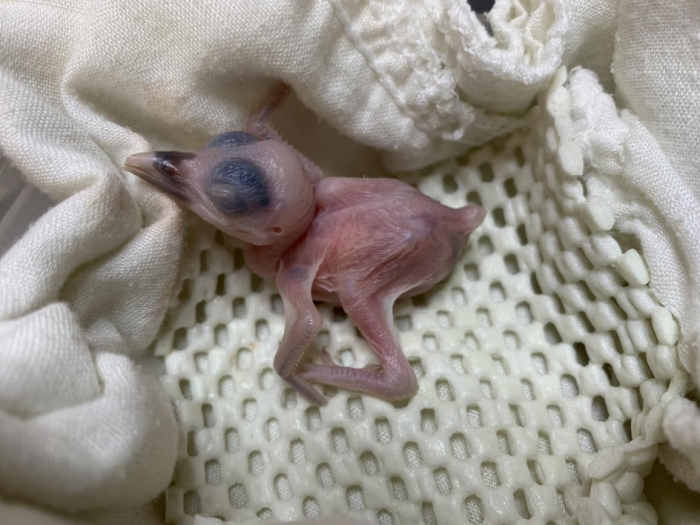
A Guam kingfisher hatched last week at the Smithsonian Conservation Biology Institute in Front Royal, Va. Specialists say that this bird is extinct in the wild. (Photo: Erica Royer, Smithsonian Conservation Biology Institute)
Conservationists often try to save species that are endangered in the wild. But a bird that hatched recently in Virginia is not merely endangered in nature, authorities said, it is extinct.
In a way, the April 22 hatching of the Guam kingfisher at the Smithsonian Conservation Biology Institute in Front Royal, might be likened to preservation of such a celebrated and vanished creature as the dodo bird.
In announcing the hatching of a bird “extinct in the wild,” the Smithsonian’s National Zoo said only about 140 of the kingfishers exist in human care, so “every chick is extremely precious.” Read more from the Washington Post.
Posted: 28 April 2019








